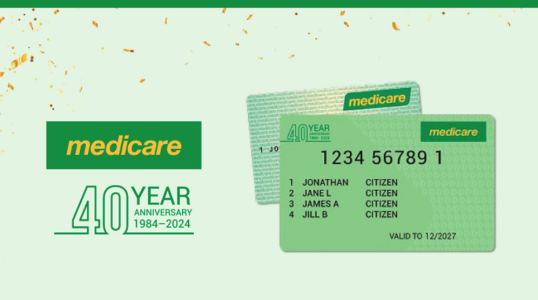1.2 million Australians to 'keep a bit more of what they earn' in latest Medicare levy change
By
VanessaC
- Replies 7
In a move that is set to bring relief to many Australians, the federal government has announced a significant increase in the Medicare levy threshold.
This change is expected to benefit approximately 1.2 million low-income earners, allowing them to retain more of their hard-earned money.
The Medicare levy, a tax that helps fund some of the costs of Australia's public health system, is typically charged at a rate of 2 per cent of taxable income.
However, the threshold at which this levy kicks in is set to rise by 7.1 per cent, in line with inflation.
This means that the income level at which taxpayers are required to pay the levy will increase from $24,276 to $26,000.
This change is particularly significant for seniors and pensioners, whose threshold has been raised to $41,089.
Families, too, will benefit, with the threshold for them increasing to $43,846.
This proposed change means that these groups can earn more before they are required to pay the Medicare levy.
Treasurer Jim Chalmers has stated that this increase is part of a broader package of cost-of-living relief measures.
'This will ensure people on lower incomes continue to pay less or are exempt from the Medicare levy,' he said.
'It means 1.2 million Australians get to keep a bit more of what they earn.'
This boost in the Medicare levy threshold was announced alongside changes to income tax cuts, which will benefit those earning under $150,000.
'This is about doing what we responsibly can to ease some of the pressure being felt by Australians right around the country, but especially for people on lower incomes, young people, seniors and women,' Chalmers added.
The announcement of the Medicare levy threshold increase coincides with the 40th anniversary of Medicare, a significant milestone that is being commemorated with an exhibition at Parliament House.
Medicare, launched on February 1, 1984, by then-Labor prime minister Bob Hawke, was introduced almost a decade after the scheme was first introduced in its initial form as Medibank.
It has since become the foundation of Australia’s public health system, providing access to free or low-cost medical, optometrical, and hospital care.
Prime Minister Anthony Albanese claimed Medicare was the foundation of the nation’s public health system, saying, 'It is a testament to the good judgement of the Australian people who time and time again voted to protect Medicare and keep it strong.'
'We need to celebrate the achievement of the creation and the maintenance of Medicare, and we need to strengthen it.'
 What are your thoughts on this change to the Medicare levy threshold? Do you think it will make a significant difference to your finances? Share your thoughts with us in the comments below.
What are your thoughts on this change to the Medicare levy threshold? Do you think it will make a significant difference to your finances? Share your thoughts with us in the comments below.
This change is expected to benefit approximately 1.2 million low-income earners, allowing them to retain more of their hard-earned money.
The Medicare levy, a tax that helps fund some of the costs of Australia's public health system, is typically charged at a rate of 2 per cent of taxable income.
However, the threshold at which this levy kicks in is set to rise by 7.1 per cent, in line with inflation.
This means that the income level at which taxpayers are required to pay the levy will increase from $24,276 to $26,000.
This change is particularly significant for seniors and pensioners, whose threshold has been raised to $41,089.
Families, too, will benefit, with the threshold for them increasing to $43,846.
This proposed change means that these groups can earn more before they are required to pay the Medicare levy.
Treasurer Jim Chalmers has stated that this increase is part of a broader package of cost-of-living relief measures.
'This will ensure people on lower incomes continue to pay less or are exempt from the Medicare levy,' he said.
'It means 1.2 million Australians get to keep a bit more of what they earn.'
This boost in the Medicare levy threshold was announced alongside changes to income tax cuts, which will benefit those earning under $150,000.
'This is about doing what we responsibly can to ease some of the pressure being felt by Australians right around the country, but especially for people on lower incomes, young people, seniors and women,' Chalmers added.
The announcement of the Medicare levy threshold increase coincides with the 40th anniversary of Medicare, a significant milestone that is being commemorated with an exhibition at Parliament House.
Medicare, launched on February 1, 1984, by then-Labor prime minister Bob Hawke, was introduced almost a decade after the scheme was first introduced in its initial form as Medibank.
It has since become the foundation of Australia’s public health system, providing access to free or low-cost medical, optometrical, and hospital care.
Prime Minister Anthony Albanese claimed Medicare was the foundation of the nation’s public health system, saying, 'It is a testament to the good judgement of the Australian people who time and time again voted to protect Medicare and keep it strong.'
'We need to celebrate the achievement of the creation and the maintenance of Medicare, and we need to strengthen it.'
Key Takeaways
- Low-income earners in Australia are set to receive a tax boost with an increase in the Medicare levy threshold.
- The new thresholds mean individuals can earn up to $26,000, and seniors and pensioners up to $41,089, before needing to pay the Medicare levy.
- Treasurer Jim Chalmers announced the change, highlighting it as part of broader cost-of-living relief measures likely to benefit 1.2 million Australians.
- The 40th anniversary of Medicare's launch was commemorated, with Prime Minister Anthony Albanese praising it as a fundamental part of Australia's public health system.









